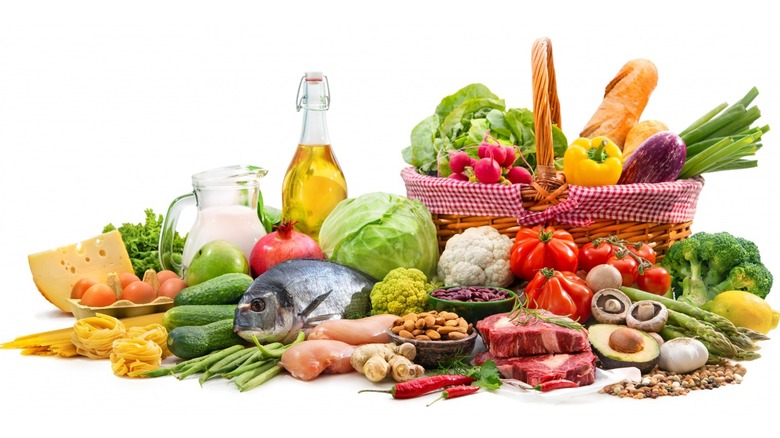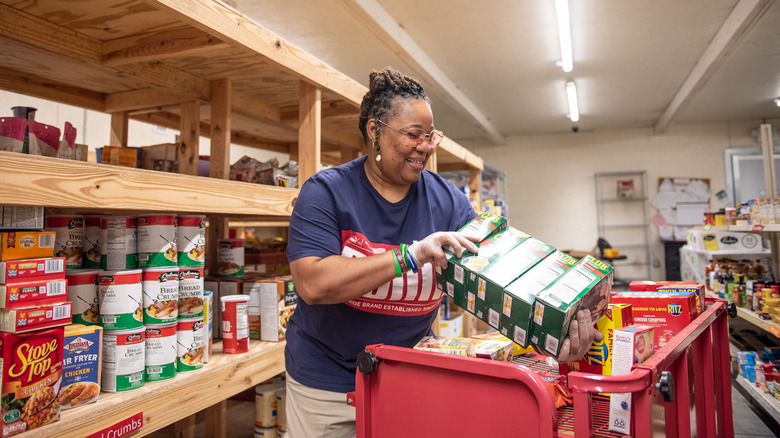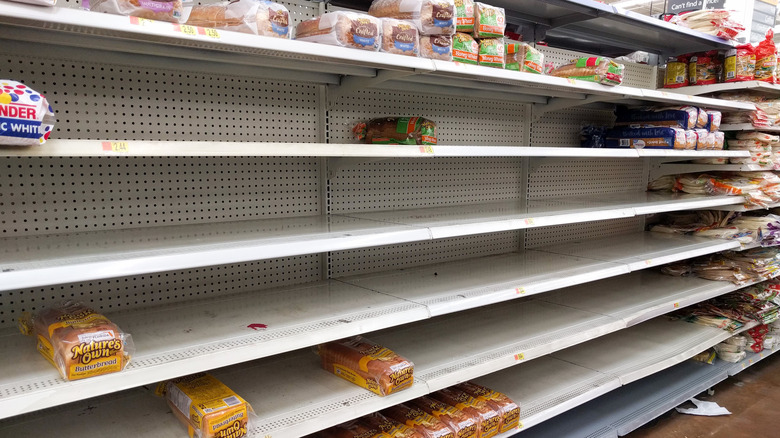How A Transformed Food System Could Make The US More Food Resilient
Months before the 2016 elections which saw Donald Trump elected president, Anne Kapuscinki, who taught sustainability science at Dartmouth, issued a stark warning that was published by the Concord Monitor: "The United States has a broken food system," which she clarified as "the policies pertaining to how we grow food, how it winds up on our tables and all the steps in between." Those same policies, she said, could explain why fruits and vegetables cost more than junk food and why "agriculture in the United States is succeeding at production, but its dominant methods are not sustainable."
To say that the warning went unheeded might be something of an understatement because as The Guardian points out, among the first victims of the coronavirus pandemic were not only the humans who caught the virus but the food system that saw farms unable to move their products while supermarket shelves sat empty, and food prices soared to record levels. And even while farmers discarded milk in fields, animals that couldn't be turned into meat were being euthanized, and fruits and vegetables were left to rot. Food insecurity grew from 11%to 15%. The Guardian also points out that 2020 saw a 50% jump in the number of Americans who used food banks compared to the previous year as – a staggering 60 million or more people turned to those banks for help. If that's not enough, researchers are warning, per The Conversation, of compromised farmlands, thanks to soil degradation.
The USDA is tasked with overhauling the food industry
The Biden Administration is hoping to turn all this around with a new plan to make the food industry more resilient. The scheme, which is being administered by the Department of Agriculture, is aimed at "transform[ing] the food system to benefit consumers, producers, and rural communities by providing more options, increasing access, and creating new, more, and better markets for small and mid-size producers."
It might sound like a big statement, but the plan comes with actionable items under four important categories: "food production," "food processing," "food distribution," and "markets and consumers." Among other things, the USDA is hoping to help farmers move away from conventional methods, which experts argue have depleted the soil, and toward organic farming. It wants to encourage urban agriculture and hopes to see groups set up "independently owned food processing" and distribution systems. Other stated priorities include developing a strong pipeline of workers within the processing sector and cutting down on food waste. On the consumer side, the agency seeks to encourage healthy eating, widen the availability of healthy food, and better facilitate aid to families in need.
The program is expected to cost more than $2.1 billion, per Reuters, but implementing systemwide changes for the long haul might require cooperation from lawmakers. Agriculture Secretary Tom Vilsack explained to the outlet that Congress and the USDA would have to hammer out the funding for additional and updated programs. All the while, inflation creates greater urgency.
America needs to future-proof its food supply chain
Secretary of Agriculture Tom Vilisak said the plan is critical if the United States hopes to avoid seeing its food system compromised again if another COVID-level event strikes down the line. He stressed that the country "need[s] a more resilient system. A more resilient system is a system that has options," per Reuters.
Part of that would mean viewing food through a new set of eyes. UN special rapporteur on the right to food Michael Fakhri put it this way in a piece for The Guardian: "The world's food systems have been failing people for a long time. The climate crisis is ravaging the planet, biodiversity diminishes every day and food insecurity is on the rise." He adds, "The Covid-19 pandemic has highlighted what we have known for decades – hunger, malnutrition, and famine are not caused by inadequate amounts of food. They are caused by the political failures that restrict people's access to adequate food."
We can only hope that the new initiative goes some way into fixing that. But only time and possibly future stress to the system will tell.


